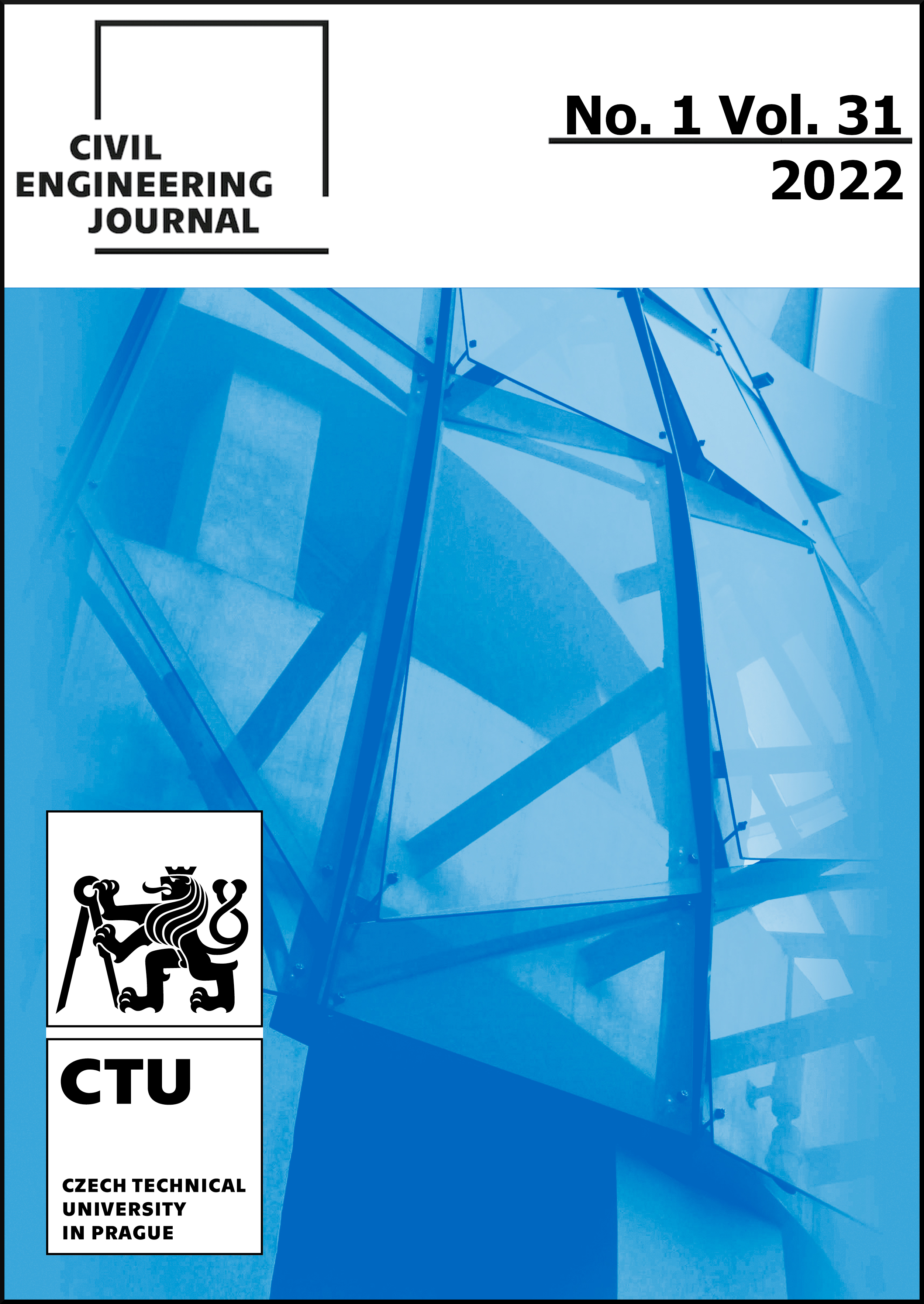Service Life Prediction of Basalt Fiber Reinforced Concrete under Salt Freeze-thaw Cycles
DOI:
https://doi.org/10.14311/CEJ.2022.01.0017Keywords:
Basalt fiber reinforced concrete; Mechanical property; Weibull Model; Gray Model; Service life predictionAbstract
To address the reduced durability of concrete structures under salt freeze-thaw erosion in Northwest China, basalt fiber reinforced concrete and common concrete with different mixing amounts were selected to predict their service life in three freeze-thaw conditions. Results showed that the damage on concrete under fresh water freeze-thaw condition is lower than that caused by salt freeze-thaw erosion, the addition of basalt fiber can effectively slow down the degradation of mechanical properties of concrete under salt freeze-thaw erosion, and the lowest degradation rate is reached when the content of basalt fiber is 0.15%. Fiber hinders the expansion of cracks and reduces the pores, and in turn improves the frost resistance durability of concrete. The service life prediction results obtained with Gray Model and Weibull Model are roughly similar, among which, Gray Model needs less sample volume, while Weibull Model presents more accurate prediction results.
Downloads
References
Li Weimin, Xu Jinyu. Impact behavior and constitutive model of basalt fiber reinforced concrete[J]. Engineering Mechanics, 2009(1).
Feng Zhongju, Chen Sixiao, Xu Hao, et al. Durability evaluation of concrete in alpine salt marshes based on grey system theory[J]. Journal of Traffic and Transportation Engineering, 2018,18(06):18-26.
Xie Guoliang, Shen Xiangdong, Liu Jinyun, Zhang Bin. Freezing resistance and damage degradation model of bas-alt fiber recycled concrete[J].Composite Materials Science and Engineering,2021(04):55-60.
Kizilkanat A B , Kabay N , Veysel Akyüncü, et al. Mechanical properties and fracture behavior of basalt and glass fiber reinforced concrete: An experimental study[J]. Construction and Building Materials, 2015, 100:218-224.
Boxin Wang, Jingjing Pan, Ruichang Fang, Qing Wang. Damage model of concrete subjected to coupling chemical attacks and freeze-thaw cycles in saline soil area[J]. Construction and Building Materials.2020,242:118205.
Ralegaonkar R , Gavali H , Aswath P , et al. Application of chopped basalt fibers in reinforced mortar: A review[J]. Construction and Building Materials, 2018, 164(MAR.10):589-602.
Audrius Vaitkus, Judita Gražulytė ,OrcID, et al. Concrete Modular Pavement Structures with Optimized Thickness Based on Characteristics of High Performance Concrete Mixtures with Fibers and Silica Fume[J]. Materi-als.2021,14(12),3423.
The 2019 edition of "Standards for Test Methods of Physical and Mechanical Properties of Concrete" is released[J]. Commercial Concrete,2019(11):9.
Ministry of Housing and Urban-Rural Development of the People's Republic of China. Test method for long-term performance and durability of ordinary concrete: GB/T50082-2009[S]. Beijing: China Construction Industry Press, 2009:10-14.
Zhang Yana, Liu Xingwang, Du Yao, Liu Yan. Durability evaluation of concrete structures based on fuzzy exten-sion analytic hierarchy process[J].Journal of Hebei Agricultural University,2014,37(01):102-105.
Zhang Yizhe. Research on fatigue damage of high-speed EMU frame based on working condition recognition[D]. Beijing Jiaotong University, 2019.
Huang Weiqing. Software reliability evaluation based on cloud theory and grey model[D]. Xi'an University of Posts and Telecommunications, 2016.
Li Jinyu, Peng Xiaoping, Deng Zhenggang, Cao Jianguo, Guan Yushi, Lin Li, Tian Juntao, Li Fang, Wang Aiqin, Wang Zhigang, Peng Tao, Cai Meizhu, Zhang Xiumei. Quantitative design of concrete frost resistance[J]. Concrete, 2000 ( 12) : 61-65.
Downloads
Published
Issue
Section
License
Copyright (c) 2022 Author

This work is licensed under a Creative Commons Attribution-NonCommercial 4.0 International License.
Authors who publish with this journal agree to the following terms:
- Authors retain copyright and grant the journal right of first publication with the work simultaneously licensed under a Creative Commons Attribution License that allows others to share the work with an acknowledgement of the work's authorship and initial publication in this journal.
- Authors are able to enter into separate, additional contractual arrangements for the non-exclusive distribution of the journal's published version of the work (e.g., post it to an institutional repository or publish it in a book), with an acknowledgement of its initial publication in this journal.
- Authors are permitted and encouraged to post their work online (e.g., in institutional repositories or on their website) prior to and during the submission process, as it can lead to productive exchanges, as well as earlier and greater citation of published work (See The Effect of Open Access).
How to Cite
Accepted 2022-03-31
Published 2022-04-30











